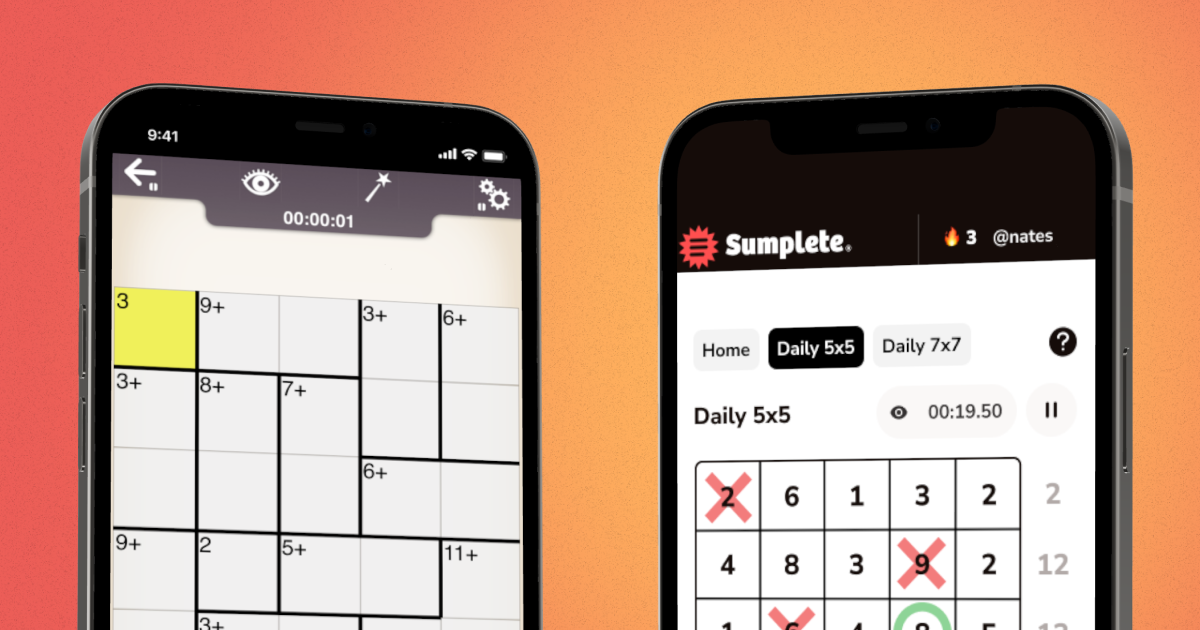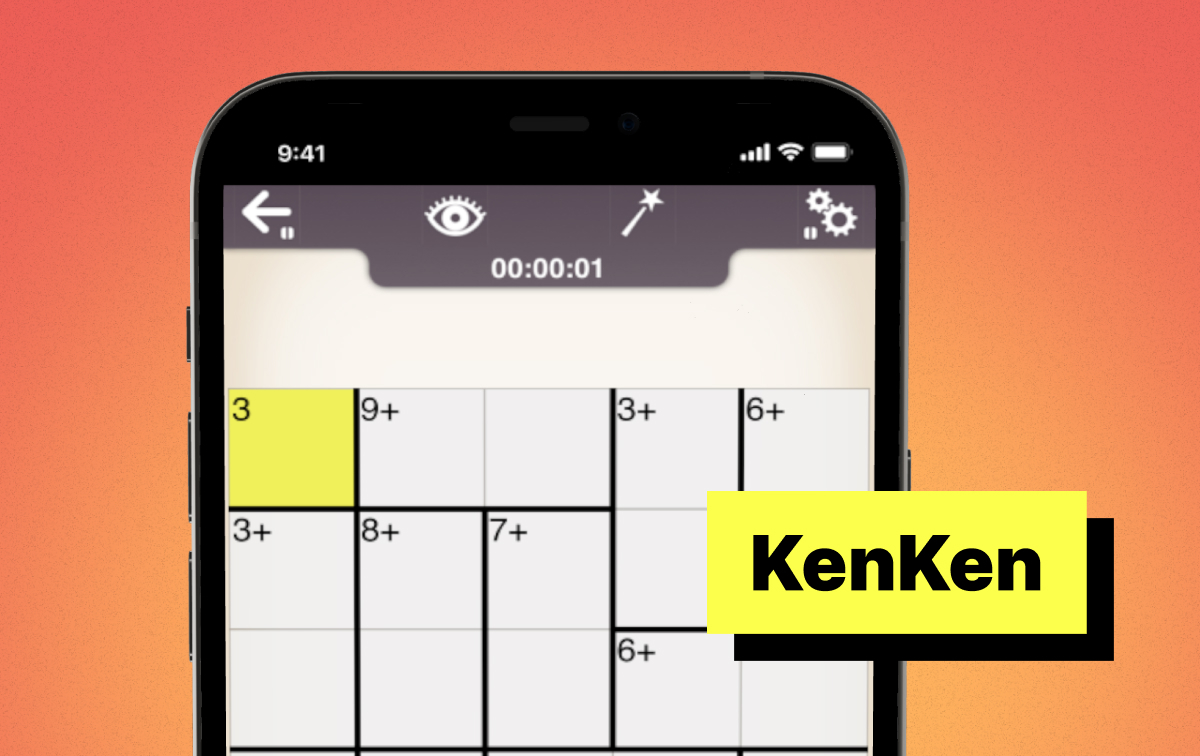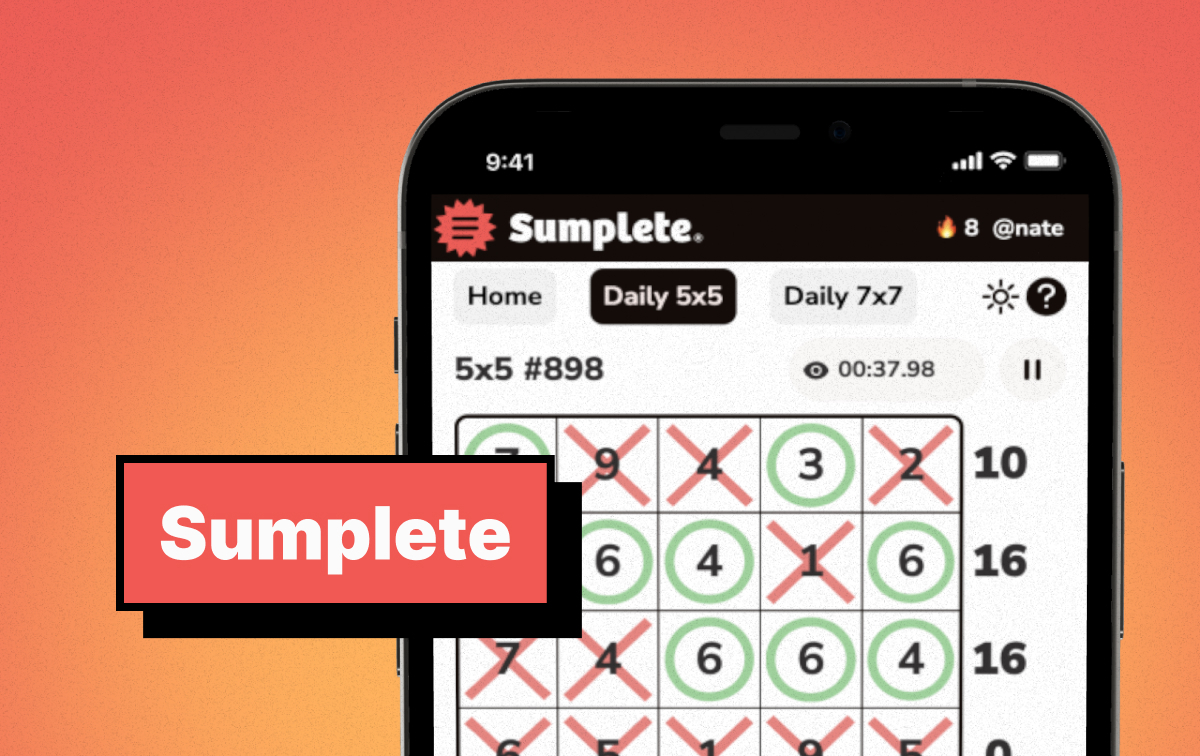KenKen vs Sumplete: Rules, Difficulty & Which Puzzle Fits You
Related: Number Logic Puzzles: Daily Guide

What Are the Differences Between Sumplete and KenKen?
Sumplete and KenKen are both number-based puzzle games with different objectives.
The goal of Sumplete is to eliminate and select cells in each horizontal row and vertical column so that the sum of the values in the selected cells is equal to that line’s corresponding sum clue. Players click on cells once to eliminate them, twice to select them, and a third click will “undo” the move for that particular cell.
Easier levels start at the 3x3, 4x4, and 5x5 grid sizes. The 6x6 is a step up in terms of difficulty, as are the 7x7, 8x8, and 9x9 modes.
The average Sumplete game takes roughly 3 to 8 minutes to solve — competitive players are quick to use helpful shortcuts such as clicking the sum clues themselves after selecting cells in a given line to auto-mark eliminations.
KenKen grids feature partitioned cages that each have a target number and a required mathematical operation. Players must fill each cage so that the mathematical operation successfully reaches the target number without repeating digits across any row or column on the grid.
Common KenKen boards are between 4×4 and 9×9-sized grids. The difficulty level of KenKen increases as the cage size expands and the placement and frequency of the mathematical operations become more complex.
Side-by-Side Rules
| Step | KenKen | Sumplete |
|---|---|---|
| 1 | Read each cage’s target and operator; note cage size. | Read fixed row/column targets; they don’t change. |
| 2 | Build digit combos that satisfy the cage and avoid row/column repeats. | Cross out any cell that would push a line past its target. |
| 3 | Use intersections to narrow candidates and complete cages. | Use intersections to zero lines; re-scan residuals as sums drop. |
Keep long technique links outside the table for cleaner parsing.
Game Elements Comparison Table
| Game Elements | KenKen | Sumplete |
|---|---|---|
| Core mechanics | Cage arithmetic (+ − × ÷) | Elimination-style sums |
| Math needed | Combinations & partitions | Quick addition |
| Grid sizes | 4×4–9×9 (typical) | 5×5, 6×6, 7×7 (Master) |
| Average solve time | 8–15 min | 3–8 min |
| Learning curve | Steeper for beginners | Easy to learn (3 steps) |
| Mobile UX | Official mobile options available | Mobile-friendly; larger tap targets; auto-mark |
| Difficulty band | Easy → Expert | Easy → Master |
| Best for | Math-puzzle purists | Quick daily brain boost |
What are Common KenKen Strategies & Mistakes?

Common KenKen strategies used by advanced players include:
- Single Cell Cage Locks: Identifying any cages with single cells containing a digit with no mathematical operations; these cages have numbers that can be accounted for at the very beginning of the game, as there are no mathematical equations to solve.
- Parity Checks: Leveraging combination patterns of even and odd numbers in relation to the target numbers and mathematical operations to determine if remaining cells in the cage are odd or even.
- Actively avoiding row/column repeats: Prioritizing unique digits and avoiding repeated numbers in rows and columns that span across multiple cages to ensure each cell input is valid.
Common KenKen mistakes include:
- Forcing Cage Math: Solving the mathematical equations of the cages without cross-checking to ensure that the figures in each row and column are unique.
- Ignoring Alternative Factor Pairs: Failing to deviate from certain multiplication pairs, resulting in repeated inputs for the rows or columns on the grid.
- Over-guessing Long Cages Early: Guessing the inputs for long cages early in the game, only to discover the inputs are invalid in the later stages.
What are Common Sumplete Strategies & Mistakes?

Common Sumplete strategies include:
- Targeting Small Sum Clues: Starting each game by targeting the smallest sum clues first.
- Complementary Pairs or Triples: Checking for complementary pairs or triples that can quickly satisfy the sum clue criteria.
- Residual Cell Checks: Double-checking to make sure that residual cells are accounted for by the end of the game.
- Auto-Marking: Clicking the sum clue to auto-mark cells that haven’t been addressed.
Some common mistakes Sumplete players make are:
- Over-clearing a line: Eliminating values that are needed to solve the board.
- Starving intersecting lines: Solving for one direction on the board without taking the opposite direction into account, resulting in invalid cell eliminations and selections.
- Rushing Big Targets: Taking action on large sum clues without targeting smaller values first.
Which One Should You Play?
Are you seeking a fast mental workout that you can play on a daily basis? If so, Sumplete’s 5×5 or 6×6 grids are a great fit for your needs.
If you are on the hunt for a longer game session with a math-heavy focus, KenKen’s medium or large cages are probably more your speed.
Younger students who may be learning mathematical operations for the first time can benefit from either game. KenKen includes all four of the basic operations, while Sumplete is focused on honing players' quick addition and elimination (via subtraction) skills.
Those looking for a great mobile experience will want to try Sumplete for its larger tap targets, mobile-friendly gestures, and auto-mark features that make the game feel faster.
FAQ
Is KenKen harder than Sumplete?
Both KenKen and Sumplete offer various grid sizes and difficulty levels, so it’s hard to say that one is outright more challenging than the other. Different players will encounter different struggles with each game, depending on their personal strengths and weaknesses.
Do I need advanced math for KenKen?
Generally speaking, you do not need advanced math skills to play KenKen. However, the more difficult levels of KenKen will require more complex logic and reasoning skills to identify which values need to be input into specific cells for the mathematical equations to reach the target criteria.
What’s a good solve time for each?
A good solve time for KenKen is anywhere between 10 and 20 minutes, while a good solve time for Sumplete would be anywhere from 3 to 8 minutes.
Can kids learn these puzzles?
Yes, kids can learn these puzzles and improve their math skills by doing so! Younger children who are still working on their basic addition and subtraction skills will likely find more value in Sumplete, whereas older students are more likely to find KenKen boards to be a solid challenge.
Where can I play daily versions? (Sumplete / KenKen)
Click here to play the Daily KenKen challenge!
You can access Sumplete’s Daily 5x5 and 7x7 boards by clicking the links below:
Final Verdict & Next Steps
The final verdict:
KenKen is a methodical and math-rich game, whereas Sumplete is quicker and elimination-driven.
If you enjoy arithmetic-rich cage logic and longer sessions, start with a few games of KenKen. If you prefer quick, satisfying math logic with fewer rules than KenKen, give Sumplete’s 5×5 or 6×6 grids a try before leveling up to the 7×7 Daily board.